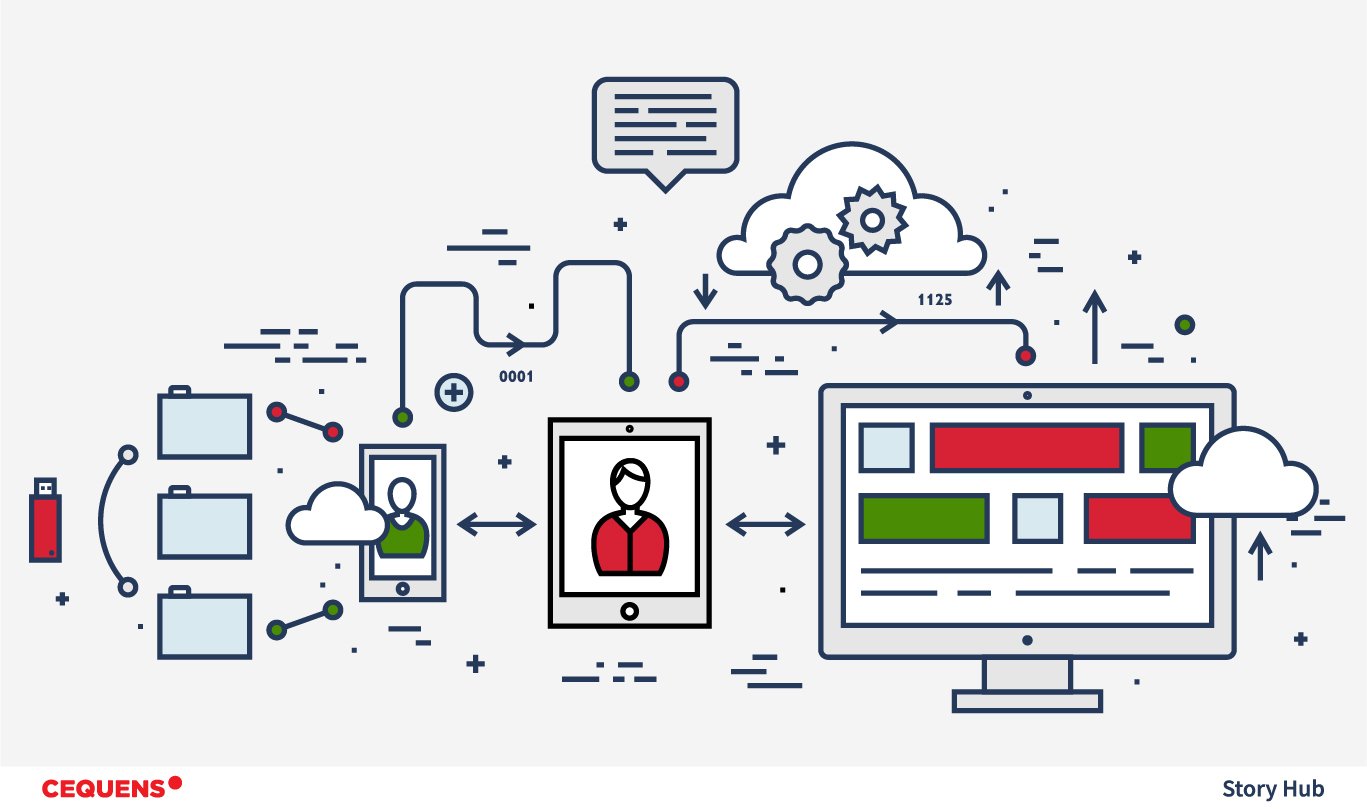In the fourth industrial revolution, omnichannel communication will be at the heart of successful business operations. This makes it essential for enterprises across industries to invest in Communications-Platform-as-a-Service (CPaaS).
Today, almost everyone carries around a smart mobile device that enables seamless communication through multiple channels. However, businesses can find it hard to keep pace without a highly adaptable communication solution.
For example, customers can pull out their smartphone and send a request for more information or file a complaint within seconds, but companies will be charged with finding innovative ways to tailor their responses while keeping their messages engaging.
Before we go any further, let’s first define CPaaS. At its most basic, CPaaS can be defined as a fusion of programmable cloud and telecom technologies that provide turn-key communication tools like the SMS, voice, and video that don’t demand their own physical backend infrastructure.
In reality, CPaaS is all that and much more because it’s a one-stop-shop for all your communication needs. So we also have to add artificial intelligence, chat, messaging, speech recognition, and virtual reality into the mix.
According to Cequens’ VP of Products, Karim Zaki, CPaaS is “...an accelerator for businesses. It facilitates time to market for businesses, allowing businesses to simply ‘plug and play’ a solution skipping all kinds of operational headaches, red-tape, carrier relationships, …etc. It essentially reduces barriers to entry into the communication terrain. That’s highly valuable for businesses with multiple regional offices.”
So what are the key characteristics that define CPaaS? Let’s take a look.
1. Traditional Cell Phone Standard & Internet-Based Communication
- Cloud-based communication platforms bring together the functionality of both traditional phone networks and modern IP communications systems.
- Enterprises can benefit from having all their communication channels on a single platform without involving a telecommunications group or purchasing the necessary backend hardware to achieve it.
- Before the emergence of CPaaS, real-time communications only took place on systems that were built for a specific purpose. Now, you can engage your customers not only through a traditional phone call, but also switch to video or chat seamlessly (if the situation demands it).
2. Seamless Integration
- Leading CPaaS solutions come equipped with Application Programming Interfaces (APIs) and Software Development Kits (SDKs). So developers can easily integrate their systems with the cloud-based platform and quickly deploy their finished enterprise-grade products.
- When businesses integrate communications tools into their applications, it negates the need for customers to switch to a traditional (PSTN) telephony system to call customer service for support. This approach gives a whole new meaning to unified communications.
3. Provides Regional\Global Reach
- When brands partner with an established CPaaS vendor, they can benefit from immediate access to hundreds of carriers across the planet. For enterprises, CPaaS can help them increase their regional and global reach without having to engage in a single negotiation with a telecommunications carrier.
- As cloud-based communications platforms can be customized to your specific needs, businesses can take a customer-centric approach that is tailor-made for each particular audience.
- You can also take it a step further and engage with each individual consumer based on their specific communications preferences (by taking into account when, where, and how each person likes to be engaged).
- For example, if a customer prefers to be contacted via a chat application in the evening over a phone call or email, you’ll be able to engage that particular customer, according to their preference through the same CPaaS platform.
Follow Us On
Linkedin
4. Enables Real-Time Reporting & Analytics
- CPaaS platforms boast real-time analytics and dynamic reporting tools that can be leveraged to ascertain SMS delivery status and call usage data. All this information can be accessed easily in one place through a highly user-friendly dashboard.
- Cloud-based communication platforms help take business intelligence to the next level. With the power of data analytics, you can now view real-time data, concurrently analyze historical reports, and user forecasting to make “intelligent” data-driven decisions.
5. Supports Multiple Programming Language
- Leading CPaaS platforms these days support a variety of programming languages. As a result, your in-house developers can start customizing enterprise communications systems with the code they already know.
Some of the programming languages supported by cloud-based communications platforms include the following:
- Java
- .NET
- PHP
- Python
Since CPaaS will also support a do-it-yourself (DIY) drag and drop model, you can customize how you engage with your target audience without writing a single line of code. This approach works out to be the ideal solution for the shortage of top tech talent in the MEA region.
6. Pay-As-You-Go Billing Model
- When businesses incorporate a CPaaS model, they don’t have to make a significant investment in all the backend infrastructure that’s demanded by traditional communications solutions. In fact, more often than not, there’s zero up-front capital required to jump on the CPaaS bandwagon.
- When companies sign up for the pay-as-you-go billing model, they will be well-placed to customize their communication solutions and identify innovative ways to interact with new and existing customers.
7. Scalable & Reliable
- Cloud-based communications solutions are highly secure, scalable, and agile. You can also scale up or down depending on present demands and only pay for what you use.
- Enterprises that embrace CPaaS solutions are also well equipped to seamlessly scale from prototype to global production capacity. As all this will be backed up on the cloud, enterprises will also be well-placed to improve business continuity.
- In the digital age, CPaaS will be the underlying force that will help drive businesses forward. Its DIY plug and play feature also make it easier for companies to benefit from enhanced communication without all the operational headaches that are inherent in traditional communications systems.
- This highly agile and scalable solution demands little to no investment, so businesses can take advantage of innovative business intelligence systems that will help drive their business forward.
Read Now: Top 7 CPaaS Trends to Lookout for in 2019


